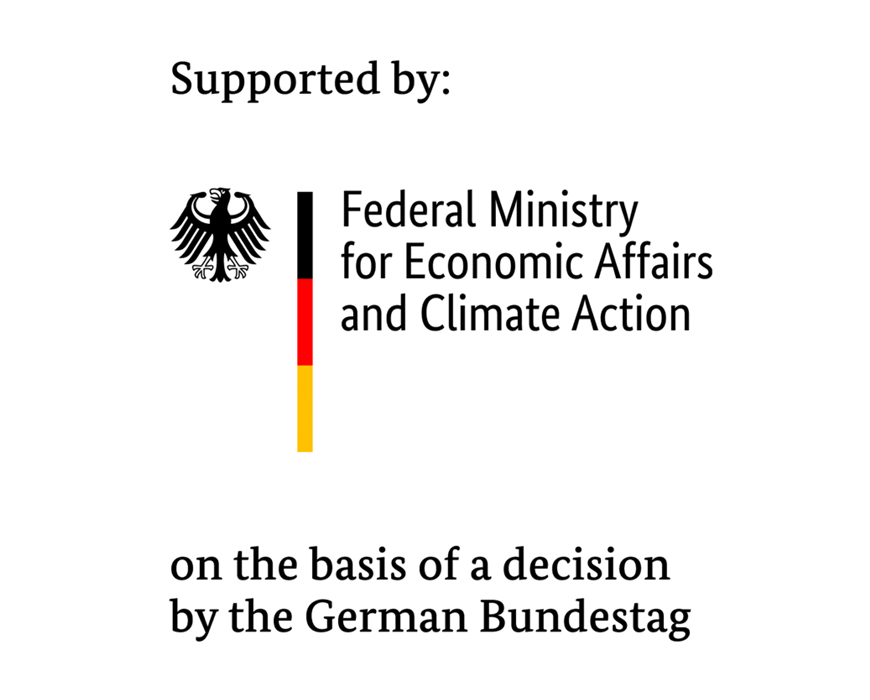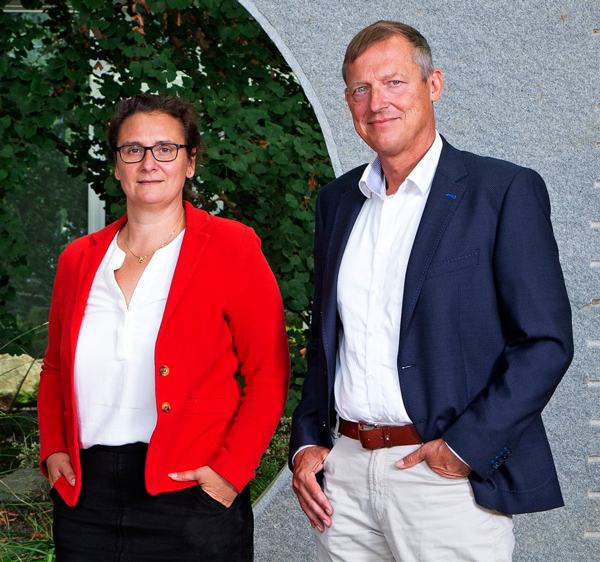Bundled hydrogen know-how: New locations in Leuna and Görlitz for Fraunhofer IWES
The Fraunhofer IWES took over a large part of the hydrogen activities of Fraunhofer IMWS at the beginning of 2022. Fraunhofer IWES will thus maintain additional locations in Leuna and Görlitz, which are geared towards different focal points of the hydrogen value chain and are set for further expansion. This will not only accelerate the development of expertise in the field of hydrogen, but also establish a unique infrastructure: three test fields for electrolyzers and their components, which are currently partly in operation and partly under construction, will then be managed from a single source. Dr.-Ing. Sylvia Schattauer of Fraunhofer IMWS will take up the role of Acting Director of Fraunhofer IWES at the beginning of the year and will then constitute the dual leadership of the institute together with Prof. Andreas Reuter.
Testing, measuring, and validation of components and phenomena spanning all aspects of wind energy generation – that is Fraunhofer IWES’ brand essence. To this end, a high-performance testing infrastructure has been established and expanded over the last 10 years with an investment volume of around €150 million. Following the merging of the IMWS’ area of research with Fraunhofer IWES’ hydrogen activities, the institute will operate electrolyzer test fields in Bremerhaven, Leuna, and Görlitz. Connected via a digitally networked infrastructure and in close cooperation with Fraunhofer IWU and Fraunhofer IMWS, Fraunhofer IWES will then have test and certification capacities available for electrolyzers and fuel cell systems of over 25 MW.
The facilities complement each other, which generates synergies: the test center in Bremerhaven is directly coupled with an 8 MW wind turbine and employs a virtual grid to test the electrical properties of electrolyzers; in Leuna, the facility has a direct connection to the chemical industry and there will be capacities for power-to-X processes available; last but not least, in Görlitz, the automated production of electrolyzers, among other things, will be investigated and optimized in collaboration with Fraunhofer IWU.
“It is now possible for the first time to demonstrate the effect and modeling and thus the interaction of large regional energy production units, storage units, and consumer units across sectors, starting with wind-based energy production and continuing to electricity-based hydrogen production and right up to use,” said Dr.-Ing. Sylvia Schattauer, Acting Director of Fraunhofer IWES.
For customers, this offers the advantage of coordinated utilization planning, the possibility of obtaining comparable results from different test benches, and being able to select the corresponding environment and, ultimately, the right expertise depending on the focus. With its core competencies in microstructure analysis, the Fraunhofer IMWS will in future focus on issues for reliable and high-performance materials in the hydrogen economy and will also contribute this know-how to joint projects with the Fraunhofer IWES.
The high dynamics of the hydrogen industry and the respective local conditions and requirements inspired several Fraunhofer experts to come up with the idea for an electrolyzer test field several years ago. As a result, three laboratories with individual profiles were developed in parallel and have already been partially completed. The demand for testing services is high, as the interaction of electrolyzers and renewable energies in particular poses an immense technical challenge – the fluctuating energy feed-in is pushing the systems to their limits. The aim of the three Hydrogen Labs is therefore to optimize the electrolyzers for this purpose, to improve their reliability, efficiency, and cost-effectiveness, and, last but not least, to keep track of safety.
Fraunhofer IWES demonstrates that wind energy and hydrogen production complement each other perfectly: hydrogen as an energy carrier makes energy storable and transportable; when wind is plentiful, it ensures that wind energy is not lost due to curtailment. Green hydrogen and its synthesis products can contribute significantly to the decarbonization of industries such as steel and chemicals, therefore making them key elements of the energy transition.
“We are delighted about the bundling of hydrogen activities, as this allows experts with different backgrounds to work together on solutions for the energy system of the near future and cover the entire system from hydrogen production right up to grid integration competently,” summarized IWES Managing Director Prof. Andreas Reuter.
Of the more than 300 employees at Fraunhofer IWES, 35 will initially work in the hydrogen technology division to be expanded. There are various points of contact between the laboratories, and they are already collaborating on joint projects.
__
Fraunhofer IWES
Fraunhofer IWES secures investments in technological developments through validation, shortens innovation cycles, accelerates certification procedures, and increases planning accuracy by means of innovative measurement methods in the wind energy and hydrogen technology sectors. At present, more than 300 scientists and employees as well as more than 100 students are employed at these sites: Bochum, Bremerhaven, Bremen, Emden/Leer, Görlitz, Hamburg, Hanover, Leuna and Oldenburg.


Last modified:
